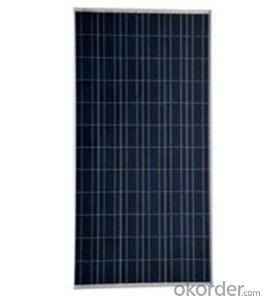Tier 1 Solar Inverter List
Tier 1 Solar Inverter List Related Searches
Best Inverter Solar Panel Solar Panel On Roof Rack Inverter To Solar Panel Ratio Solar Panel Decking Lights Solar Panel Inverter Box 1000 Watt Solar Panel Inverter 12 Volt Solar Panel Inverter Plastic Solar Lanterns Buy Solar Panel Inverter Solar Panel Inverter CostHot Searches
Type Of Inverter For Solar Types Of Inverter For Solar Used Solar Inverter For Sale Inverter Size For Solar System Solar Edge Inverter For Sale 5kw Solar Inverter For Sale Solar Inverter For Sale Solar Inverter For Battery Solar Inverter For Split Ac Solar Inverter For Laptop Solar Inverter For Fridge Solar With Inverter Price Solar Inverter With 2 Battery Solar Inverter Price In China Best Solar Inverter In China Solar Inverter Price In Dubai Solar Inverter Price In Uae Solar Inverter Price In Kenya Solar Inverter Price In Kerala Solar Hot Water Collectors For SaleTier 1 Solar Inverter List Supplier & Manufacturer from China
Okorder.com is a professional Tier 1 Solar Inverter List supplier & manufacturer, offers integrated one-stop services including real-time quoting and online cargo tracking. We are funded by CNBM Group, a Fortune 500 enterprise and the largest Tier 1 Solar Inverter List firm in China.Hot Products
FAQ
- The role of a bypass switch in a solar inverter is to provide a means for redirecting the flow of electricity in case of an emergency or failure within the inverter. It allows for the direct connection of the solar panels to the utility grid, bypassing the inverter, ensuring a continuous supply of electricity even when the inverter is not functioning properly. This helps maintain the stability and reliability of the solar power system.
- No, a solar inverter cannot be directly used with solar-powered water heaters. The solar inverter is designed to convert the DC power generated by solar panels into AC power for general electrical use in households. On the other hand, solar-powered water heaters utilize direct thermal energy from the sun to heat water, without involving the need for converting DC power to AC power.
- Yes, a solar inverter can be used in areas with high levels of dust or pollution. However, it is important to regularly clean and maintain the inverter to ensure optimal performance and prevent any damage caused by dust or pollution accumulation.
- The maximum number of MPPT inputs in a solar inverter can vary depending on the specific model and brand. However, in general, solar inverters can have anywhere from one to multiple MPPT inputs, with some high-end models offering up to six or more MPPT inputs.
- The maximum short-circuit current that a solar inverter can handle depends on its specific design and specifications. It varies from one model to another, but typically, solar inverters are designed to handle short-circuit currents within the range of 10 to 25 times their maximum continuous output current. However, it is crucial to consult the manufacturer's guidelines or product specifications for the exact maximum short-circuit current rating of a specific solar inverter model.
- PV grid-connected inverter can directly load it?
- Grid-connected inverter is usually equipped with island protection function, can only receive the power grid, if the load directly, the output is disconnected.
- The maximum efficiency at partial load for a solar inverter refers to the highest level of efficiency that can be achieved when the inverter is operating at less than its full capacity. This efficiency is typically lower than the maximum efficiency at full load, as the inverter may not be able to convert the same amount of energy with the same level of efficiency when it is not running at its maximum capacity.
- The key differences between a central inverter and a string inverter lie in their design and functionality. A central inverter is a large, centralized unit that converts the DC electricity generated by a solar array into AC electricity. It is typically installed in a central location, such as a utility room, and is responsible for converting the power from multiple strings of panels simultaneously. On the other hand, a string inverter is a smaller unit that is installed close to the solar panels and converts the DC power from each individual string into AC power. One major difference is the level of scalability. Central inverters are typically used in larger solar installations, such as commercial or utility-scale projects, where a large number of panels are connected in parallel. They can handle high power capacities and are highly efficient. In contrast, string inverters are commonly used in smaller residential or small-scale commercial installations, where a smaller number of panels are connected in series. They offer flexibility in system design and can be easily expanded or modified. Another difference is the impact of shading or module mismatch. In a string inverter system, if one panel in a string is shaded or experiences reduced performance, it can affect the overall output of the entire string. This is because all panels in a string are connected in series, and the output is limited by the weakest performing panel. In a central inverter system, however, the impact of shading or module mismatch is minimized as each string operates independently, allowing for better performance optimization. Additionally, maintenance and monitoring differ between the two types. Central inverters are easier to access and maintain as they are typically installed in a dedicated location. They also offer advanced monitoring capabilities, allowing for centralized tracking of system performance. String inverters, being installed close to the panels, require more individual maintenance and monitoring efforts. Both central and string inverters have their own advantages and disadvantages, and the choice between them depends on factors such as project size, system design, shading conditions, and budget.















































